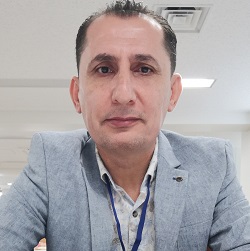Professor Salah I. Yahya from the Department of Software Engineering, Faculty of Engineering at Koya University with a research group from Iran and Vietnam published a research article entitled “The use of artificial neural network to design and fabricate one of the most compact microstrip diplexers for broadband L-band and S-band wireless applications” in the Wireless Networs.
Wireless Networks journal is indexed by Clarivate Analytics with IF =2.659 and by SCOPUS with quartile Q2.
About the author:
Name: Salah I. Yahya
Qualification: Ph.D.
Academic rank: Professor
Affiiliation: Department of Software Enginering, Faculty of Engineering, Koya University
TAP: https://sites.google.com/koyauniversity.org/salah-ismaeel/
Google Scholar account: https://scholar.google.com/citations?user=jXO8SZkAAAAJ&hl=en
ORCID account: https://orcid.org/0000-0002-2724-5118
Publons account: https://researcherid.com/rid/A-9661-2017
Journal Coverage
Title: Wireless Networs.
Clarivate Analytics (Wos: IF = 2.659)
Science Citation Index
Science Citation Index Expanded
SCOPUS: Q2
Publisher: Springer
Country: Netherland
About the Paper:
Title: The use of artificial neural network to design and fabricate one of the most compact microstrip diplexers for broadband L-band and S-band wireless applications
DOI: https://doi.org/10.1007/s11276-020-02478-x
Abstract:
In this paper, a computational intelligence method based on artificial neural network (ANN) is used to design and fabricate a high-performance microstrip diplexer. For a novel basic bandpass filter we have developed an ANN model with S-parameters and group delay (GD) as the outputs and frequency, substrate type, substrate thickness and physical dimensions as the inputs. Using the multilayer perceptron neural network trained with back-propagation algorithm, a novel microstrip diplexer with a very small area of 0.004 λ2g is obtained. It has the insertion losses less than 0.1 dB and GDs less than 1 ns, which are the best values in comparison with the previously reported microstrip diplexers. The proposed diplexer operates at 1.4 GHz and 3 GHz for L-band and S-band wireless applications, respectively. It has two wide fractional bandwidths of 47% and 45% which make it appropriate for broadband applications. Moreover, the very low insertion losses of the presented diplexer make it suitable for energy harvesting applications. The designed diplexer can attenuate the 1st up to 7th harmonics, where several transmission zeros are obtained that improve the stopband features. To verify the design process, the ANN model and simulation results, the presented diplexer is fabricated and measured.
----------
Koya University (KOU) is located in the city of Koya (Koy Sanjaq) which is 1.0 hr drive to the East of the Kurdistan Region capital Erbil (Arbil, Hewlér) in Kurdistan Region of F.R. Iraq. It is on the foothills of beautiful high mountain. Its campus has been carefully laid out to embrace the beautiful mountainous nature. . There are 4 Faculties and 2 Schools in KOU; Faculty of Engineering (FENG), Faculty of Science and Health (FSCH), Faculty of Education (FEDU), Faculty of Humanities and Social Silences (FHSS), Shcool of Physical Education (SPHE) and School of Medicine (SMED). Also, there are two research centers; Genome Center and Malai Gawra Center. Moreover, at KOU there is an English Language Center (BELC) at KOU has been opened with the sponsorship of IREX and American embassy in Baghdad as well as with the support of Spring International Language Center of The University of Arkansas. KOU has two Scientific Journals; ARO-The Scientific Journal of Koya University, which is indexed by Clarivate Analytics (ESCI), and Koya University Journal of Humanities and Social Sciences (KUJHSS). KOU is a proactive member of Erasmus/ Marhaba Project and Erasmus+. KOU signed many Memorandum of Understandings (MoU) with many International Universities, e.g., The University of Arkansas (June 2015). The Lulea University in Sweden (April 2014), The University of Nottingham in the UK, The University of Buckingham in the UK (Oct 2008), Belkin University in Turkey (Sep 2009) and The University of Greenwich in the UK.

